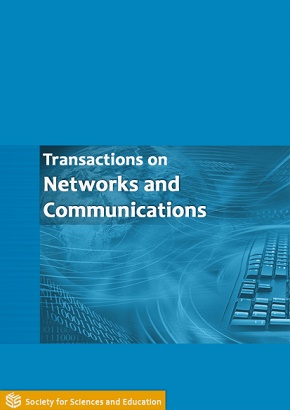IoT Security: Simulation and Analysis of TCP SYN Flooded DDOS Attack using WireShark
DOI:
https://doi.org/10.14738/tnc.83.8389Keywords:
Internet of Things (IoT); Network Forensics; IoT Forensics; Distributed Denial of Service (DDoS); SYN Flood attack.Abstract
Nowadays Internet of Things (IoTs) technology is significantly entering our daily lives because IoT have widely scope such as security systems, smart industrial environment, vehicles, electronic appliances, wearable devices, healthcare etc. Since these devices are interconnected with each other on the internet to give the various types of services to consumers with various technologies. The emergence of new technology in various fields it also brings up challenges in the area of the forensic investigation. The latest tools and the procedure stream did won't satisfy disseminated and current IoT infrastructure. In recent year, the huge improvement of DDoS assault in IoT network, IoT security has directly gotten to be one of the first concerned points inside the field of network security. SYN flood assault misuses the TCP’ three way handshake handle and all victim's assets are depleted and assist connection requests cannot be considered, so this can be denying the legitimate gets to. The outcomes produced are utilized as evidences to demonstrate that a machine is victimized and is confronting a DDOS attack. In this paper, we have done network analysis for detecting SYN flooded attack on IoT Smart Environment using WireShark.
References
[2]. https://www.cloudflare.com/learning/ddos/syn-flood-ddos-attack/, Last Accessed December 21, 2019.
[3]. Zawoad, Shams, and Ragib Hasan. "FAIoT: Towards Building a Forensics Aware Eco System for the Internet of Things." Services Computing (SCC), 2015 IEEE International Conference on. IEEE, 2015.
[4]. E.S. Pilli, R.C. Joshi, & R. Niyogi. “A Generic Framework for Network Forensics”. International Journal of Computer Applications (IJCA) (0975 – 8887) Volume 1 – No. 11, 2013.
[5]. H. Wang, D. Zhang, and K. G. Shin, “Detecting SYN flooding attacks”, in Proceedings of Annual Joint Conference of the IEEE Computer and Communications Societies(INFOCOM), volume 3, pages 1530-1539, June 23-27 2002
[6]. Darren Anstee(2016), Denial of service attack data, Arbor Networks Inc
[7]. Keyur Chauhan, Vivek Prasad, September, 2015,”Distributed Denial of Service (DDoS) Attack Techniques and Prevention on Cloud Environment”, International Journal of Innovation and Advancement in Computer Science, Volume 4,210-215.
[8]. K.Saranya, N.Aparna, June-2016,”Prevention of Vulnerability on DDoS Attack Towards Wireless Networks”, International Journal of Merging Technology and Advance Research in Computing, Volume 4, Issue 14, 1-12.
[9]. Snort.(2016):https://www.snort.org/
[10]. OpenNebula.(2016):http://opennebula.org/
[11]. Ms.K.Geetha , Dr.N.Sreenath “SYN FLOODING ATTACK – IDENTIFICATION AND ANALYSIS” International Conference on Information Communication & Embedded Systems (ICICES 2014)
[12]. Rizal, R., Riadi, I. and Prayudi, Y., 2018. Network Forensics for Detecting Flooding Attack on Internet of Things (IoT) Device. Int. J. Cyber-Secur. Dig. Forensics (IJCSDF), 7, pp.382-390.






